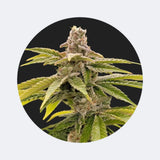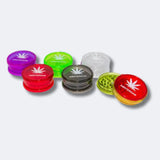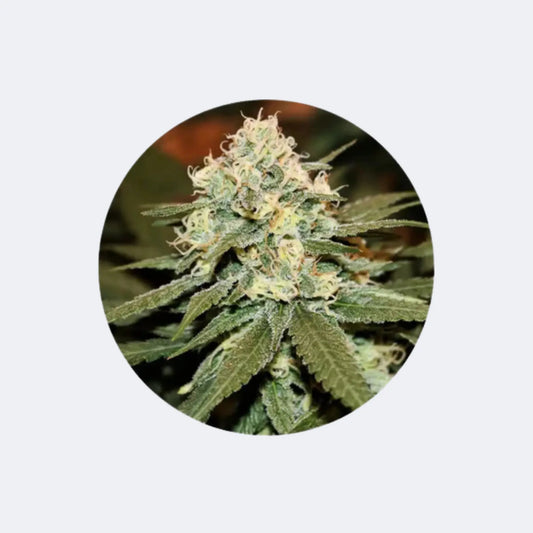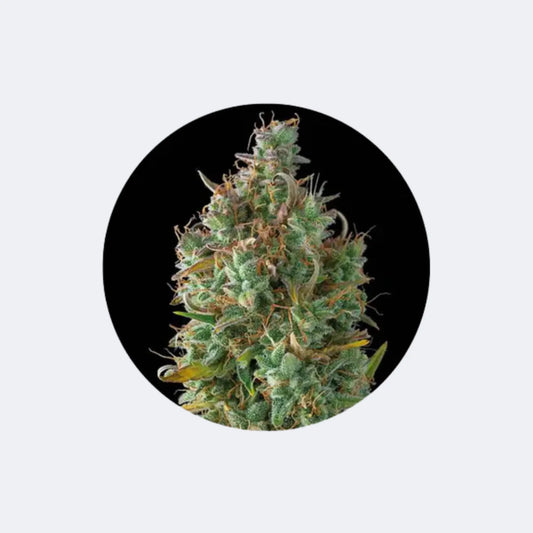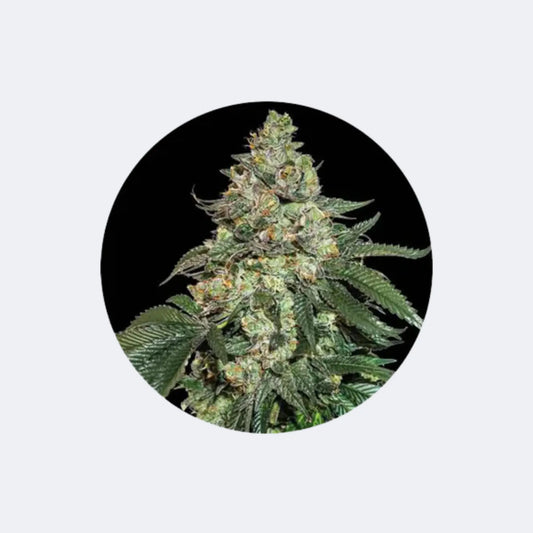
Light cycles for cannabis plants
Andreas LeschkeShare blog post
"How cannabis plants move from the vegetative phase to the flowering phase"
Generally, when asked how much light weed needs to grow or flower, you will find two light durations on the internet.
It is generally recommended to give the cannabis plant 18 hours of light and 6 hours of darkness per day during the growth phase (vegetative phase). During the flowering phase , however, it is recommended to give the weed lady a maximum of only 12 hours of light and 12 hours of darkness!
Please note:
These are purely average values, which may vary!
A cannabis plant can grow with 16 hours of light and 8 hours of darkness, and just 14 hours of light and 10 hours of darkness can cause the Weed Lady to begin flowering.
For this reason, I will cover this topic in more detail, as there are very different opinions on this topic, which, depending on how you adjust the light, can lead to increased stress on the plants, which is counterproductive for healthy and effective flowering.

1. Automatics Genetics cannabis seeds
In the case of so-called autoflowers, the mother genetic "Ruderalis" was crossed with either "Indica" and/or "Sativa", so that automatics are hybrids that, due to the Ruderalis genetics, do not require any light adjustment to reach the flowering phase.
The plant will automatically switch from the vegetative phase to the flowering phase after a few weeks (2-4 weeks).
For automatic plants, a light duration of 18 hours per day is generally recommended. This applies to both the vegetative and flowering phases. Therefore, adjusting the timer is not necessary.
However, please keep in mind that automatics are often more sensitive than their photoperiod counterparts. Depending on the genetics, a flowering light duration of 17 or 16 hours may be more ideal than the full 18 hours.
For this reason, I would recommend checking the plants regularly for light stress symptoms, such as Cal/Mag deficiency or white spots on the leaf and bud tips.
If light-related stress symptoms occur, it is recommended to slightly reduce the light duration in order to reduce the stress level for your beloved medicinal plant.
It should also be noted that with LED lamps that have both a "Vegi" and a "Bloom" switch, only the "Vegi" lamp is switched on during the first few weeks until the first flower hairs are visible.
As soon as the first flower hairs are visible and small "buds" have formed, the bloom light is switched on ADDITIONALLY.
The reason is that the plant is far from finished growing and still needs blue light to stretch during flowering. Red light primarily serves flower development and formation.
For this reason, both lamps should be switched on during the flowering phase, especially since the Cannabis Lady needs the most intense light during the flowering phase.
If you have a full-spectrum LED lamp without a "Vegi" and "Bloom" switch, you can obviously skip this step.

2. Photoperiod Genetics ( feminized cannabis seeds , without auto function)
However, with feminized, photoperiodic weed ladies, you have to adjust the light duration and, depending on the LED, the light colors yourself to encourage the plant to transition from the vegetative phase to the flowering phase. This sounds more complicated than it actually is, so don't worry, it's not as difficult as it sounds.
As with automatics, our plants require approximately 18 hours of light per day and 6 hours of darkness during the growth phase. Again, this can vary from genetic to genetic. Therefore, the plant should be monitored regularly to reduce the light intensity and duration slightly if light stress symptoms appear (cal/mag deficiency, white tips on leaves and/or buds) to relieve the plant of stress.
During the flowering phase, a maximum of 12 hours of light per day with 12 hours of darkness is usually recommended. While this information is generally not incorrect, it can vary from genetic to genetic.
Cannabis enthusiasts who have never grown before might easily think it's far too complicated and prefer automatics. Please don't let this discourage you, because it's actually easier to find your preferred light spectrum with a photoperiod weed lady than with automatics.
I will NOT recommend the daring experiment, which is repeatedly recommended, of reducing the amount of light per day from 18 hours of light to 12 hours of light all at once.
After all, in nature, summer doesn’t switch to autumn within a single day.
The hours of light decrease over a longer period of time and likewise the light colors of summer, where there is more blue UV light, do not change to the reddish autumn light within 24 hours.
Therefore, we should try to imitate nature a little in indoor growing in order to achieve the best possible conditions for our ladies.
Another important aspect is that, usually shortly before the "flowering phase initiation," the plant is defoliated by "lollipopping," which means enormous stress for the Weed Lady, from which she first has to recover.
If you then suddenly change from 18 hours to 12 hours of light per day, our beloved medicinal and fun plant gets an additional dose of stress.
On the one hand, stress means a stop in growth, but on the other hand, undesirable side effects can also occur, such as weathering, which causes seeds to end up in the flowers and fewer flowers to be formed.
I think we can all probably agree that we need huge buds, but not seeds or even crash the plant through excessive stress, right?
With a full-spectrum LED lamp without a "Vegetable" or "Bloom" switch, it's quite simple. Once you're ready to flower the plant, reduce the light duration by half an hour each day. This way, you can go from 18 hours of light to 12 hours of light per day within a maximum of 12 days.
I deliberately placed the word "maximum" before the 12 days. During this period, the plant may well begin forming its first flower hairs after just 14 hours of light per day, sending a clear signal:
"This far and no further" ... because she feels more comfortable with 14 hours of light per day during the flowering phase than with less light!
This allows us to always determine, based on the flower hair formation, which light duration is most suitable for our chosen genetics. This wouldn't be possible if we suddenly switched from 18 hours to 12 hours.
If you know a genetic better and know that it thrives with, say, 13 hours of light during the flowering phase, you can also implement the timer change by reducing the light duration by one hour each day. This won't stress the plant.
However, with unknown genetics, I would always reduce the light by only half an hour to determine the ideal light duration for flowering.
The situation is similar with an LED lamp that offers a "Vegi" and a "Bloom" function.
During the vegetative phase, when the plant is still growing, only the Vegi function should be activated so that we get a blue light for about 18 hours/day.
If you want to encourage your beloved Grinse Grass Palm to flower, reduce the light duration by half an hour every day until the first flower hairs form and you have thus already determined the ideal light duration per day.
A few days later, the first small buds and flower formations should be visible. This is the time when we add the reddish "Bloom" light to the blue "Vegi" light.
This is the time when the plant needs "autumn light" to produce beautiful, large buds. Throughout the flowering period, up until harvest, both functions (vegetation and bloom) remain active, as the plant continues to grow despite flowering.
Although the plant's growth phase is usually completed approximately five weeks after the flowering phase begins, the flowers still require blue UV light to grow. Therefore, both functions (Vegetable + Bloom) should remain active until harvest time.
We thank the author Jorge Rieger for this blog post on light cycles for cannabis plants. Feel free to follow him on his Facebook account. --> Click here
